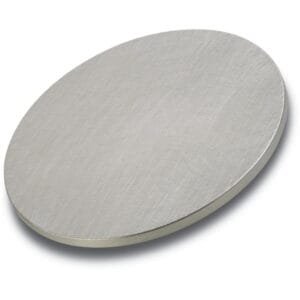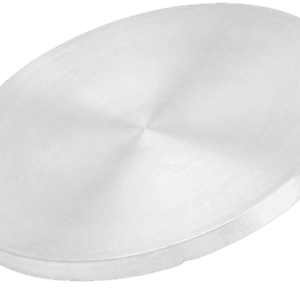Yttrium Manganate Sputtering Target Description
The Yttrium Manganate Sputtering Target is composed of yttrium, manganese, and oxygen. High-purity yttrium manganate sputter targets are crucial in deposition processes to ensure high-quality deposited films. TFM specializes in producing sputtering targets with up to 99.9995% purity, employing rigorous quality assurance processes to guarantee product reliability.
Related products: Yttrium Sputtering Target, Manganese Sputtering Target
Yttrium Manganate Sputtering Target Specification
| Material Type | Yttrium Manganate |
| Symbol | YMnO3 |
| Color/Appearance | Solid |
| Melting Point | / |
| Density | / |
| Type of Bond | Elastomer, Indium |
| Available Sizes | Dia.: 1.0″, 2.0″, 3.0″, 4.0″, 5.0″, 6.0″ Thick: 0.125″, 0.250″ |
We also offer other customized shapes and sizes of the sputtering targets; please Contact Us for more information.
Yttrium Manganate Sputtering Target Application
The Titanium Manganate Sputtering Target is used for various applications, including thin film deposition, decoration, semiconductor manufacturing, display technology, LED and photovoltaic devices, functional coatings, and optical information storage. It is also utilized in the glass coating industry, such as for car glass and architectural glass, and in optical communication.
Yttrium Manganate Sputtering Target Packaging
Our Yttrium Manganate Sputter Targets are carefully handled to prevent damage during storage and transportation and to preserve the quality of our products in their original condition.





Reviews
There are no reviews yet.